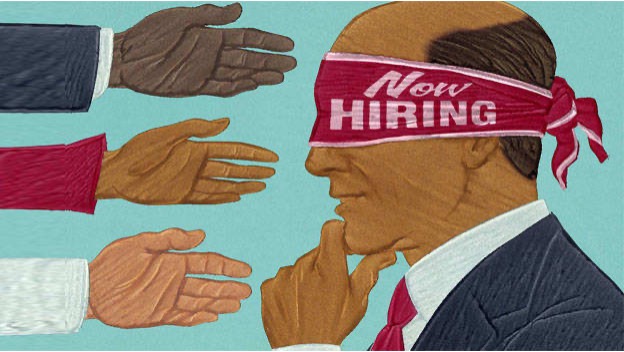In 2020, an academic study controversially claimed that having women on the board of directors won’t make much of an impact because board decisions don’t directly affect a firm’s bottom line. That statement sounds scandalous and absolutely untrue for D&I when you first read it.
However, upon reflection, you realize that the details affecting the bottom line are indeed separate from the board’s decisions. But diversity and inclusion doesn’t start or end at the top.
If the lower levels have a more significant hand in determining the bottom line, as the study seemed to suggest, one question arises. Shouldn’t we focus on making diversity at those levels a little more prominent? The logic follows.

However, the only problem is that managers might lack the time or bandwidth for this task.
Establishing D&I Goals for Managers
I had two managers in two companies across industries who would always complain about their hiring appointments and having to put aside the mountains of work they have. Often, they would push their hiring to weekends because they could relax and unwind. Additionally, they could also determine the pace of the interview and the time to allot to each of them.
When you take such overworked managers and give them the D&I imperative, it can only have one of two outcomes: Managers might overcompensate and overhire diversity candidates or put off the imperative to the next hiring cycle, given the quotas are yearly anyway. Even if they don’t hire diversity candidates in this cycle, they’ll always have the next cycle. After all, the year is long and 2021 showed that hiring doesn’t seem to stop at all.
Even in 2023, not all industries seem to have been affected by the economic slump in the same way. Thus, with such a heavy workload, top management quotas remain unaddressed until the next opportunity.
Consequences of Overcompensating D&I Hiring
If managers overcompensate and overhire diversity candidates, it has a rippling impact across the organization. When making this statement, I’m assuming an organization that passes down D&I imperatives without following up on their progress, relevance, or efficiency.
In such organizations, employees are expected to be highly driven. These expectations create patriarchal and hierarchical structures for all employees. These hierarchies are generally informal. It isn’t defined or clear. It’s just a bunch of alignments and allegiances that employees make to “survive” in the workplace.

The more patriarchal the structure, the less meaningful work there is likely to be for those diversity candidates. True, you’ve followed the letter of the directive. But what about the spirit? You’ve potentially compromised organizational efficiency when you’ve overhired so much, and to what end?
Advocates who claim the economic benefits of D&I hiring would soon realize an unintended side effect. Diversity candidates in this predicament would wonder if that was an organization they would ever want to work with. This makes executing future imperatives much tougher.
Alternatively, if the structure isn’t patriarchal, the adjustment and workplace alignment costs can become expensive. While I agree that workplace sensitivity is a critical prerequisite to a healthy workplace, such employee numbers often define the scale and the pace at which such sensitivity happens.
If you push the sensitivity training on employees too quickly or at too heavy quantities, you risk pushbacks, making the non-diversity employees feel threatened. As a result, you’ll have to deal with that fallout.
Looking outside the informal-structure-influenced group behaviour, overhiring also needs reputation management inside the firm. Implementing diversity initiatives doesn’t just end with hiring people. If you are the manager who hired many diversity candidates, the organization will put you under the microscope to see how you’re utilizing them as valuable resources.
Consequences of Not Hiring Enough D&I Candidates
When you underhire diversity candidates by pushing diversity quotas for the next hiring cycle, you’ll have to deal with a different reputation fallout. Years like 2022 and 2023 had drastically different business cycles. Assuming that the hiring rate will remain the same as in 2021 or at the same pace for the next cycle might not yield the required results.
Additionally, when overburdened managers have to manage existing team challenges along with these quotas, even though they don’t impact team competencies, you either compromise the team cohesion or the quality of hires.
Besides, driven organizations will always have the same amount of work, if not more. As managers face pressure to bring in more business, the items on the plate increase but the capacity doesn’t.
How will organizations enforce diversity and inclusion imperatives while demanding managers complete their given tasks?
Ted Bauer writes amazing content on managers being resilience builders in the organization. The core message remains the same for managers asked to become diversity champions.
You can’t say that you’re running an organization that values driven culture and ask managers to add more to their plate. At the end of the day, no matter how many imperatives you give them, they will believe that only numbers speak, which makes these diversity programs irrelevant.
Mission Statements are Too High Up to Add Value
Too many organizations, too often, have vague mission statements to enhance employee experience, and signify what they stand for. Those statements are bold, loud, and proclaiming. However, the problem is, they become meaningless by the time it trickles down to the analysts and the associates.
Large tech companies have statements like “Empower Everyone”. They want to empower each employee to be their best self at the workplace. They want the employees to engage in the workplace without fear, prejudice, or discrimination. Here’s the problem with that line: what is someone’s best self?
Even if we accept the passable excuse that someone’s best self is ever-evolving, and isn’t constant, we still have to deal with the issue of who will enforce that ‘best self’.
Best Self Requires Interactions
In reality, your best self is an amalgamation of everyone’s actions around you. For many people, workplaces are their first taste of reality after being sheltered at colleges and universities. For such people, their bosses and colleagues determine their outlook and perspective for, at least, the next two promotions or job shifts.
The ‘two shifts or promotions’ isn’t an absolute static. This merely approximates the time to outgrow superiors and colleagues, and develop your own workplace understanding.

If those initial bosses were toxic, you would be too, until you could realize things can happen without the toxicity. If the bosses were supportive, you’ll have had a benchmark to aspire to. However, one thing that I’ve found is constant is, when you bring together a sufficiently large number of people with a vested interest to succeed, you will have toxic elements at the workplace. It’s just a matter of your luck and management dedication where that toxicity manifests itself.
Implementing the D&I Mission Requires Bandwidth
Managers don’t always have the necessary bandwidth to ensure the employee empowerment imperative is carried down the line. The Top management may demand employee empowerment and diversity initiatives, but the implementation itself often falls to managers.
Google might tout that its 20% free-time rule is a result of its goal to empower people, but how many employees can truly take that 20% time for themselves? Gmail and Maps might have come out of that initiative, but those are isolated examples. In Work Rules!: Insights From Inside Google, Laszlo Bock himself says that most employees don’t have the free time to utilize that 20% of the time.
Besides, consider this: you can champion employee experience all you want. However, at the end of the day, if your manager’s bosses demand sales, revenue, clients, and reduced costs, your managers will answer that call first.
When that happens, you regress to the original status quo. And when that happens, the first things to go will always be these initiatives. Who cares about diversity when your bottom line is threatened? Who cares about equitable work distribution when you need to hit the targets and only the non-diversity candidates can help you get there?
When revenue demands hit managers, they understand one thing: the way to grow higher in the company is to consistently meet the targets. And, would you rather deal with minor reputation fallout or a revenue loss? One of them is salvageable while the other is potentially a career loss.
Conclusion
It is great to create a conversation around diversity and inclusion. Many companies are making active strides to create a positive impact. However, implementing nuances takes company-wide management dedication, which many may lack the bandwidth to execute.
Teams and departments that ensure its implementation do so only when there are spare resources available, not when business continuity protocols are engaged. Asking managers to champion employee experience, while demanding they adhere to conventional growth definitions is contradicting.
Organizations that consistently enforce employee championing programs and diversity metrics will always come first because they promise the right prioritization. Enforcing these programs generally implies strong decision-making skills in running the organization.
It’s a double-edged sword, but when executed correctly, both sides result in a win.

